Chicken from plastic bottles. Do-it-yourself chicken from a plastic bottle - photo how to make
Any farmer is familiar with the problem of chicken nutrition. Small birds are very fragile and must be provided with a complete diet. But providing chickens with normal nutrition is not easy, and even more difficult to control it. For these purposes, it is very convenient to use special feeders that simplify the process. But why buy them when you have a do-it-yourself chicken feeder?
The batteries we are talking about were made by a research team led by Seohun Choi at Binghamton University in New York. The peculiarity lies in the fact that these devices are powered by bacteria that can generate energy using exactly drops of saliva.
They are mostly paper batteries, powered by lyophilized and inactive bacteria, which come into action upon contact with saliva and are able to generate energy in just a few minutes. The advantages are obvious: you can produce electricity with a liquid available anywhere and at no cost, and the fact that the bacteria are freeze-dried makes it possible long-term storage and the ability to transport them where there is more need.
Features of the feeder
Farmers speak positively about homemade feeders. These lungs and simple devices are able to simplify the work of the poultry farmer and reduce the time for caring for young animals by several times. You can find many similar devices on the market, they differ in the shape of the containers - for convenience different types birds, as well as their age. Chick feeders are usually much smaller than those for adults, and the feeding holes are located at a low level.
New batteries for this moment have limited power, in fact, it is only capable of turning on one LED. However, researchers do not exclude that in the future, after conducting research, their potential will become much wider and can be used, in particular, in developing countries where it is difficult to find classic batteries.
Creating houses from garbage waste
Nargis Latif, a lady who lives in Pakistan, has been thinking about making trash houses out of trash. Its goal is to offer a homeless home for the homeless who respect the environment. Latif began to collect waste from paper, cardboard, bags, plastic, glass and metal. After a few years, she managed to create houses and much more, even sustainable toilets.
It would be much more economical to make such a feeder yourself. To do this, there will be enough improvised items. The same bottles are very convenient for such purposes, and water pipe would be a great solution.
Plastic bottle feeder
This is probably the simplest and affordable way make your own feeder. The design is a container with slots at the bottom in which the chickens can get food. It can be used for very young chicks. Its big plus is that the chickens are arranged in a circle and do not push, respectively, they will not be able to turn it over. According to the same scheme, you can make a drinker, as seen in the photo below.
Of the 70 people who worked with her, they were left alone. Many people also do not want to participate in this sustainable project because they do not agree to live in a house created by garbage. Despite various economic and social problems, Latif does not give up, because a just cause is worth fighting for a lifetime.
Solar panel that generates drinking water
A future in which everyone, thanks to renewable sources, will have access to energy in a more democratic way is almost a dream, especially when one thinks about unequal access to resources such as drinking water.
Too many people still do not have access to drinking water
We know that it is a privilege to live in areas of the planet where aqueducts operate. In many, too many parts of the world, there are still those who walk miles every day to get drinking water, or even those who are still dying of thirst.Tools and materials
- empty plastic bottle;
- scissors;
- vessel.
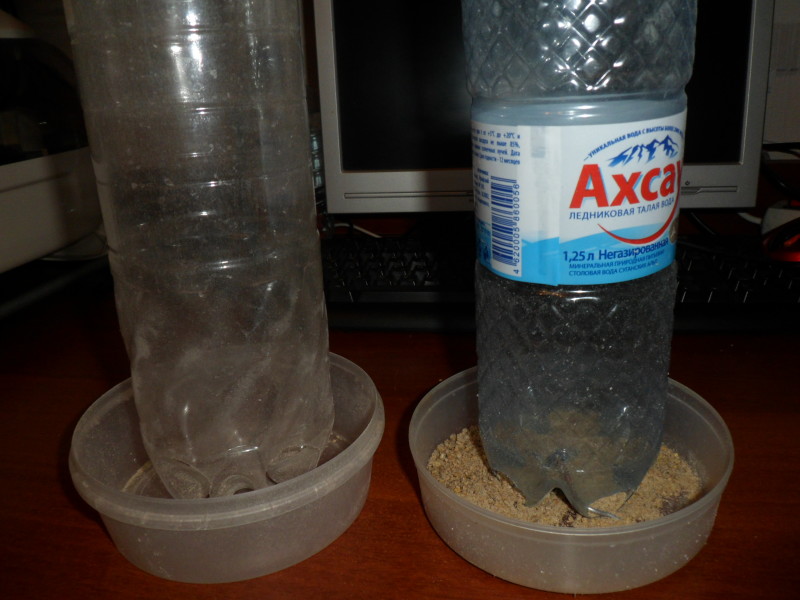
Step-by-step instruction
- One plastic bottle is selected. The usual 1.5 l is also suitable, since a large one is not needed for chicks.
- With the help of scissors, on average, several holes with a diameter of 2 cm are cut - this is enough for free access to food, and so that the chickens do not climb inside.
- The feeder is fixed in the bowl.
- Food is poured inside the bottle to the top and a homemade feeder is obtained. Now the birds can get food while in a circle, and it will freely come from the stocks at the top when the previous portion is eaten.
pipe feeder
Such a device is convenient, because it can be used immediately for many chickens. To make it, ordinary drainpipes are suitable.
There are those who use drinking water to irrigate fields or those who have their own wells, some people waste a lot at the same time, but as a rule, we all have a problem: there are several alternatives for obtaining drinking water by spontaneously drinking it. production if you can't bear very high cost. But technological innovations and some brilliant ideas can help you gain more control over the water we have access to. In other words, potentially, thanks to some systems, we can all get drinking water without buying it.
Tools and materials
- plastic pipe;
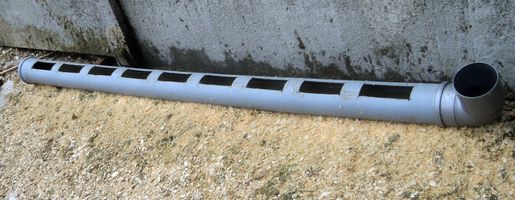
Step-by-step instruction
- To make such a feeder, you need to clean the pipe from dirt and dust.
- It needs to cut out compartments for food, as in the photo.
- We put the structure on the ground, fill it with food and the chickens will be able to eat freely at any time, without interfering with each other.
Plywood feeder
To make a tree feeder, it is enough to have some materials in the form of plywood blocks that are easily interconnected.
The idea was born thinking about people living in areas where there is no infrastructure needed to ensure a continuous supply. Drinking water is a fundamental human right. In addition to the Pacific, Atlantic and Mediterranean. Our dirty and polluting plastic has reached unimaginable heights. In fact, the Arctic Ocean was also covered by debris scattered at sea.
City streets require maintenance as weather worsen even opening holes. Not to mention, there are thousands of billions of plastic figures in the oceans. Typically, normal roads are about 90% rock, sand and limestone, and 10% bitumen.
Tools and materials
- 2 pieces of plywood for sidewalls 18 cm high and 12 cm wide;
- 2 pieces of plywood for the front and rear walls 80 cm long, 15 cm high, 12 cm wide;
- 1 piece of plywood for the base - 80 cm long and 12 cm wide;
- a wooden plank or stick (you can use a shovel handle) for a limiter 80 cm long;
- nails and a hammer for fastening parts.
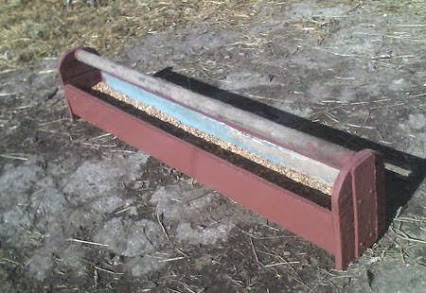
Roads last longer, are covered with 100% recycled materials, fossil fuel use and carbon footprint are decreasing, unwanted plastics are being used in landfill or even worse in the seas, and this is helping to promote the circular economy.
Is the first train without tracks a reality?
The first road produced by McRaeber is the one leading to his house, but several roads in Cumbria in the United Kingdom are already covered with this special asphalt. However, despite the tone of the announcement, we feel like this is a less innovative and surprising vehicle than imagined, albeit eco-friendly and certainly at the forefront.
Step-by-step instruction
- We take 2 pieces of plywood for the sidewalls and fasten them to the plywood base so that they form a right angle.
- We attach two long walls to the finished part of the structure.
- We attach a long bar to the top of the sidewalls, which will limit the access of the chickens.
- We place the structure on the ground and fill it with food.
Bucket feeder
Such a device is distinguished by the restriction of the food area, which leaves more food in hygienic cleanliness. To make it, it does not require a lot of materials, while it is able to feed a large number of chickens. It is also suitable for any age, so it can stay with the young until they grow up. You can get acquainted with this design in the video at the end of the article.
A Chinese train that doesn't need rails. The vehicle runs on rubber wheels, no rails are required, and the advantages are a combination of the advantages of rail transport and road transport. If you don't need tracks, this train will cost less than classic trains: about a fifth of the price of a subway. Each train must have life cycle about 25 years old, it is about 30 meters long and can carry up to 307 people or 38 tons.
Automated driving is also possible without lanes thanks to a system of sensors that send information from the ground to central system vehicle, which guarantees a long path, in fact, virtual tracks. In fact, it is "only" a smart bus.
Tools and materials
- selection plate for chickens (if there is none, the usual one will do);
- plastic bucket;
- a knife with which all manipulations will be carried out.
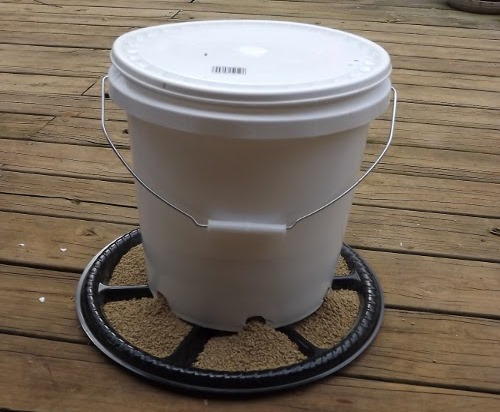
Step-by-step instruction
- First, holes are cut with a knife, which should correspond to the zones of the plate, a few centimeters in size.
- After this procedure, the bucket is installed on top and food is poured there. Under its own pressure, it will go into the zones of the plate and fill it as it is empty. The photo shows the simplicity of the product. All this design in action is clearly shown in the video at the end of the article.
We make an automatic feeder
Such a device has a big difference - it has a reserve cavity where food is stored. When food ends in the main zone, it is automatically added due to its weight, gravity and emptiness. This is convenient, because you don’t have to look to see if the chickens have food left - it will always be there. You can fill up a fairly large cavity, which will provide the bird with food for more than one day.
Inside the car there are actually two cabins for the driver, one forward and one back, so that the train does not have to make a turn, but the driver itself moves from one side to the other when the direction of travel is reversed. This means that we are talking about automatic driving, but this is not entirely true. In terms of costs, if, on the one hand, the absence of rails creates savings, on the other hand, we are faced with a bus, not a train.
"Smart" bus projects already exist elsewhere, designed to be environmentally friendly, pollute less and allow big cities switch to alternative forms of mobility. Automatic electric shuttles have already been tested in Paris, and news about solar energy, which could "bypass" traffic, was distributed by China.
Tools and materials
We will make a feeder pvc pipes. We will need:
- actually, a PVC pipe;
- low knee to her;
- knife and scissors;
- hammer and nails.

Step-by-step instruction
- First you need to fold the two pipes into an L-shape. It is more convenient when the knee is double.
- If the pipe does not become straight, attach with wire - wrap vertical base and attach it to the wall with nails.
- Pour food on top, it will flow down under natural pressure.
The auto feeder is perfect solution for Agriculture. The chicks will have free access to food, which will be supplied automatically, and limited space so as not to climb inside, and not to scatter food.
With incentives to recycle plastic bottles, prizes and eco-friendly urban furniture for communities. So 1 million bottles will have new life. Plastic is reused: municipalities are given a composition of ecological urban furniture.
Tangible proof that plastic can be reused for the community to promote moments of sociability. With eco-seals, the plastic collection is simple and of high quality. The compactor, thanks to an innovative system of great social impact, is ideal for choosing a selected collection and is therefore particularly suitable for efficient recovery and reuse in subsequent production cycles. The mechanism reduces waste volume to optimize start-up streams at recovery facilities with further benefits for environment.
Photo gallery
Photo 1. Chickens gathered around the feed Photo 2. Young growth uses a feeder Photo 3. Chickens eat at the automatic feeder
Video "Making a feeder from a bucket"
The video describes in detail the process of how to make a homemade feeder.
“Walking side by side, with a high forehead and in accordance with the rules, nourishes mutual knowledge and trust and allows us to be aware of the future that awaits us.” With advances in technology, fashion can also help reduce the amount of waste that ends up in landfills or is left on the coast each year. Ulul is Europe's leading focus processing platform.
A Turkish company has developed an automatic machine that delivers food to stray dogs and cats in exchange for inserting plastic bottles for recycling. But is it really good practice? In Istanbul, a "virtuous" citizen with a single gesture recycles plastic and helps feed and drink stray dogs and cats in the city.
Incredible beautiful crafts for the garden in the form of colorful chickens can be made using multi-colored plastic bags. Everything is extremely simple, but the effect is interesting. Chickens are large, with bright luxurious plumage.
Such garden ideas definitely need to be continued. For example, you can make not just a chicken, but a hen (make a nest for her). Or make a chicken and a rooster. Or a rooster and a whole harem of chickens. And in addition to them - a small decorative chicken coop made of boards, twigs, etc.
An initiative that, in the intention of the manufacturer, should encourage the segregation of waste and encourage the recycling of plastic bottles in accordance with the logic of "reverse vending", where, however, the "premium" to the citizen is not a purely economic return, but if we can "gain" from the point humanity's view of abandoned animals, a phenomenon that for a long time considered alarming proportions in the Turkish capital. The cost of the croquette is covered by recycling itself, and the message is clear: recycling is good for the environment and can be good, in this case, for four-legged friends too.
Creating crafts for the garden - an elegant chicken - in stages:
Make a bird frame out of strong wire. The best part about this idea for a garden is that the frame can be made “approximate” - the shape of the chicken will be set mainly by plumage.
Cut several plastic bags into strips.
Collect the strips with a large needle and fishing line or a strong thread in folds and, alternating in color, tie them around the frame of the future crafts for the garden.
Undoubtedly, this a good idea to understand and stimulate the topic of recycling and attention to abandoned animals, even if they are left to understand how this idea, in addition to good intentions, can be equally useful for the more complex cause of fighting stray dogs.
In the same city, a few decades later, was born Henry David Thoreau, the writer who, with Walden's book, became the forerunner of the modern environmental movement. The seeds planted by Jean begin to bear fruit. Always at the forefront of civil rights and environmental campaigns, San Francisco has decided to take the fight against disposables one step further. After disposables were banned a few years ago plastic bags, he has now decided to ban the sale of plastic bottles at public events.
You will end up with something colorful and shapeless. Take scissors and trim the "feathers", giving the craft the look of a chicken.
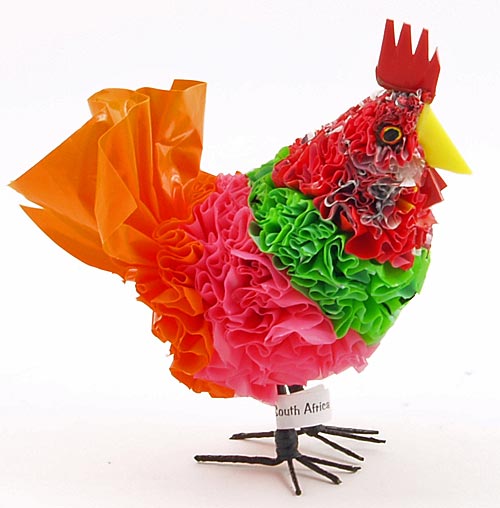
Attach the eyes (buttons-"mushrooms" with a "leg" will do well with this role). Pass a thread or fishing line through them and tie it to a wire frame between the plumage on the chicken head.
The changes to the legislation were voted unanimously by city councilors of the San Francisco Board of Supervisors, who are currently awaiting Mayor Ed Lee's signature due in late March. In San Francisco, the Zero Waste strategy has far-reaching roots, although it must be said that the metropolis is unique, especially in a context in which nearby Los Angeles has been forced by plastic lobbies to retreat.
In the United States, 50 billion plastic bottles are used annually and only 23% are recycled. Mountains of empty plastic bottles, 20 thousand in three months. The idea was to educate the boys and raise funds to fix the football field of oratory. Michel Roy's volunteers hoped to solve the problem and found they had two: We were thinking of a collection of plastic bottles that must have been in some recycling company.
The beak and comb are made of pieces of plastic. Can be cut from plastic cover etc.
The hardest part about making this garden craft: making the chicken stable. Do not forget about the "fingers" on the paws, which are turned back - they will help keep the bird balanced. You can even make two such “fingers” - the kind of crafts for giving will not spoil it.

If the chicken on wire legs is still not stable, you will have to “attach” it to the place with metal rods: tie the frame to the rod and stick it into the ground. You can not make wire paws at all, but attach two pieces of rod instead.
